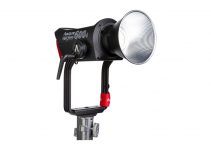Even though Apple’s recently introduced iMac Pro has impressive workstation-grade specs, one of the most prominent questions on both consumers and prosumers’ minds is whether or not it is worth the upgrade from the 2017 top-of-the-line iMac 5K with Retina Display. Besides the exclusion of workstation-class components such as having 6+ processing cores and ECC memory, the 2017 iMac 5K is hailed by many to perform similarly to the iMac Pro, according to benchmarks.
In case you missed it, you can check out the previous comprehensive comparison between the two machines in regards to video editing with FCP X conducted by filmmaker and tech guru Max Yuryev not long ago. Meanwhile, here’s the results of more recent testing that showcases which one of those counterparts would be the better option for video editing inside of Adobe Premiere Pro and DaVinci Resolve 14.
To figure out how the machines stack up against each other, Yuryev simulated several editing scenarios on both computers. First, he tested the timeline performance and export speed when working with 4K videos as well as over-the-top 8K RED Raw footage, Canon C200 CinemaRawLite and H.265 HEVC clips. He also added multiple instances of high-resolution video clips and various color grading effects to really hit the iMacs with all he’s got.
In the end, several conclusions can be made from the video. Overall, as expected, the iMac Pro performed better than the 2017 iMac 5K, as seen in the benchmarks. Nonetheless, there were some scenarios where the difference was not that apparent. An example of this would be the render time inside of DaVinci Resolve where a 5 minute 4K clip with LUTS and FG showed a difference of just a few seconds between the systems.
The big performance differences, however, become even more evident when editing RED Raw and Cinema Raw Lite files. In this regard, the six-core processors and increased amount of memory on the iMac Pro really played its part by allowing Yuryev to effortlessly play back the footage with little to no dropped frames at half resolution. This is considerably better than the iMac 5K which requires you to reduce quality exponentially to ensure smooth playback.
While the iMac Pro is the top performer in this test, there is a slight caveat found in its performance. In some instances, the iMac 5K was able to just slightly outperform the iMac Pro when working in DaVinci Resolve. According to Max, the issue might be attributed to the fact that the iMac Pro only used 25% of system resources whereas the iMac 5K utilized 70% and even more.
Of course, the iMac Pro is relatively new and the folks over at Blackmagic have yet to release an update that optimizes the Pro’s new hardware. One can only hope that the company will introduce an update as soon as possible so that new iMac Pro users won’t be left hanging with some performance lags.
Long story short, should you pay the extra $1,300 to go from the top-tier 5K iMac to the new iMac Pro? It really depends on the situation. If you intend to edit in Adobe Premiere Pro, the iMac Pro is the way to go since performance is consistently better than the iMac 5K across the board.
On the other hand, if you’re a DaVinci Resolve user that doesn’t plan to work with RAW footage anytime soon, you could save a little cash and go for the iMac 5K. Although, if RAW media is crucial to your workflow, there is no question that you need the speed advantages of the iMac Pro, despite the current lack of hardware optimization.
[source: Max Yuryev]
B&H Order Links:
Apple 27″ iMac with Retina 5K Display (Mid 2017)
Apple 27″ iMac Pro with Retina 5K Display (Late 2017)
Disclaimer: As an Amazon Associate partner and participant in B&H and Adorama Affiliate programmes, we earn a small comission from each purchase made through the affiliate links listed above at no additional cost to you.




